Q1. Based on the Latin phrase “Ubi Jus Ibi Remedium”, this is often called the greatest safeguard to fundamental rights, and a right to all other rights. Dr. Ambedkar called this "the heart and soul" of the Constitution of India. What are we talking about?
The Right to Constitutional Remedies, under Article 32. It gives citizens of India the power to directly approach the Supreme Court of India if their fundamental rights have been violated.
Q2. Due to the large number of amendments brought to the Indian Constitution by the 42nd Amendment Act, it has also been referred to as ‘Mini Constitution’. Who was the Prime Minister of India at the time?
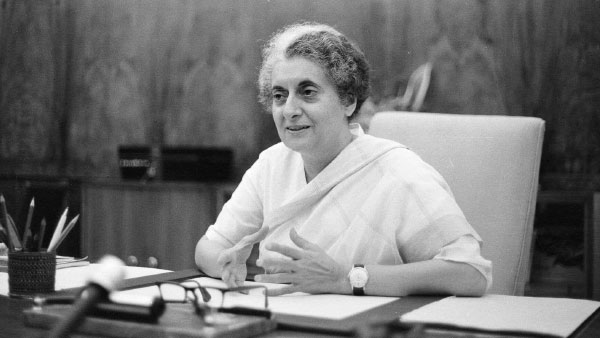
The 42nd Amendment was added to the constitution in 1976, under Prime Minister Indira Gandhi. It was the largest amendment and made sweeping changes to the Constitution.
Q3. In which of these forms was the original version of the Indian Constitution published?
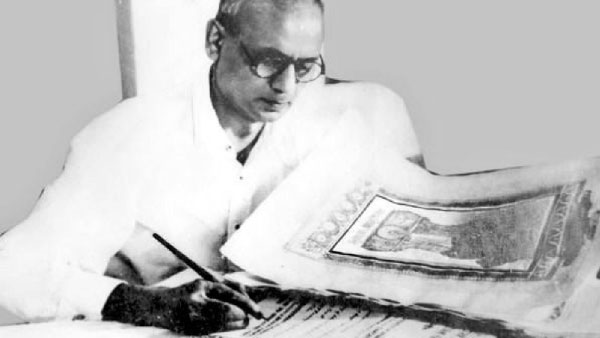
The Indian Constitution is not printed. The English version was calligraphed by hand by Prem Behari Narain Raizada in a flowing italic style. It was published in Dehradun.
Q4. Who were the first and last people to sign the Constitution of India?
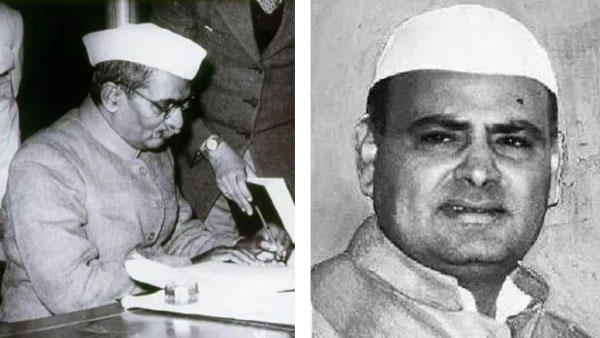
The Indian Constitution was signed by the 284 members of the Constituent Assembly. The first person to sign the Constitution of India was Rajendra Prasad, the first President of independent India and the last was Feroze Gandhi.
Q5. The Indian Constitution borrows many of its tenets from the constitutions of other countries. Which of these countries does India's Constitution NOT borrow from?
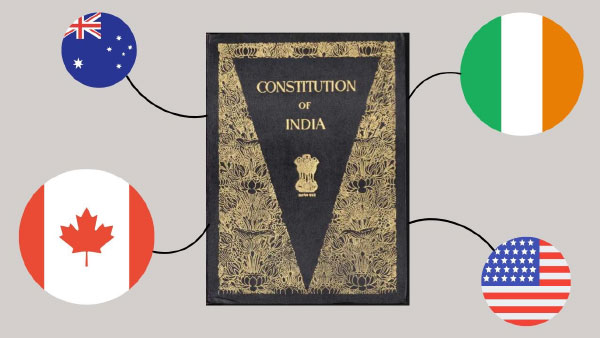
The Constitution of India borrows features from many different constitutions. These include the concurrent list and the joint-sitting of the Houses of Parliament from the Constitution of Australia, the Directive Principles of State Policy from Ireland, and the power to appoint state governors at the Centre, from Canada. But China is not one of the countries that India's Constitution has borrowed from.
Q6. The Preamble to India's Constitution starts with ‘We, the people of India, having solemnly resolved...'. The constitution of South Korea begins with 'We, the people of Korea, proud of a resplendent...' The constitutions of Bangladesh, Zambia, and many other countries, also begin with ‘We, the people’.
This common beginning is borrowed from the preamble of the constitution of which country?
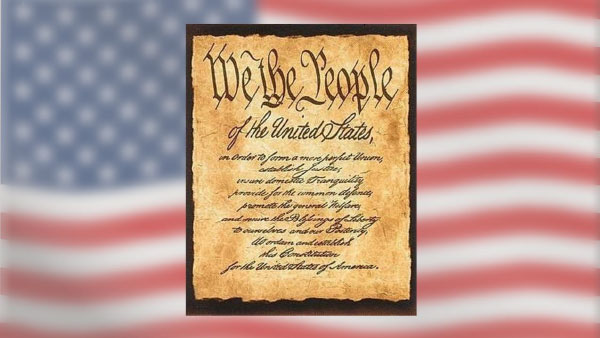
The phrase ‘We, the people’, found in the Preamble of the constitutions of several countries, is borrowed from the Constitution of the USA. The Indian Constitution, too, adopted the phrase from the US Constitution.
Q7. Home to the original copies of the Indian Constitution, ____ was established in 1921 to "assist members of the Indian Legislature". After India became a Republic in 1950, efforts were intensified to expand it through increased purchases and soon after, it became the largest of its kind in Delhi and the second largest of its kind in India. What are we talking about?
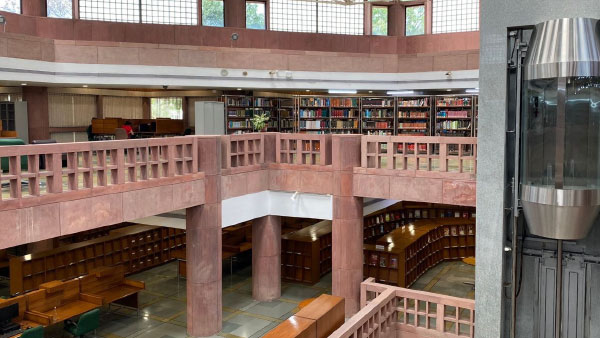
The Parliament Library in the Parliament of India. The original book of the Constitution is kept in a special helium-filled case in the Library of the Parliament of India, which is also home to a massive repository of books and publications. From 1950 to 1955, the central government began expanding and purchasing more books for the Parliament Library, and soon it became the largest library in Delhi and the second largest library in India after the National Library.
Q8. The Constitution of India came into effect on 26 January 1950, replacing the previous law of the land enacted under British rule. Which Act did it replace?
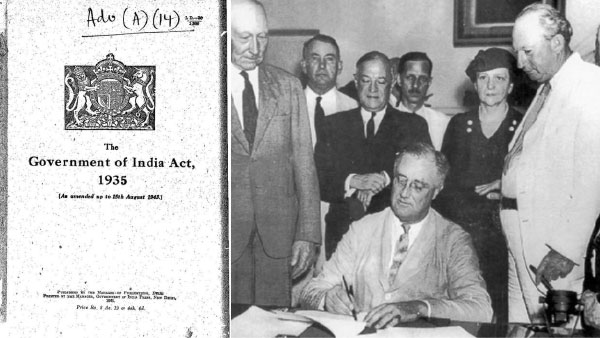
The Government of India Act, 1935. The act was India's governing document till the Constitution took effect in 1950. The Constitution's implementation took India from a Dominion to a Republic, in 1950.
Q9. Dubbed the Father of the Indian Constitution, X was born in India and graduated from Elphinstone High School, Bombay. He would then go on to study in New York City and London. Who is X?
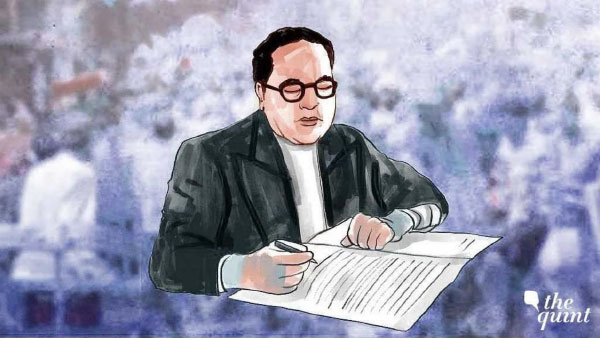
Dr Bhimrao Ramji Ambedkar was the Chairman of the Drafting Committee of the Constitution. After finishing his schooling from Bombay, he would go on to study at Columbia University in New York and at the London School of Economics and Political Science (LSE), before returning to India. He opposed the caste system in India and sought to rid India of it.
Q10. The Preamble to the Constitution was amended in 1976. Which of the following changes did it introduce?
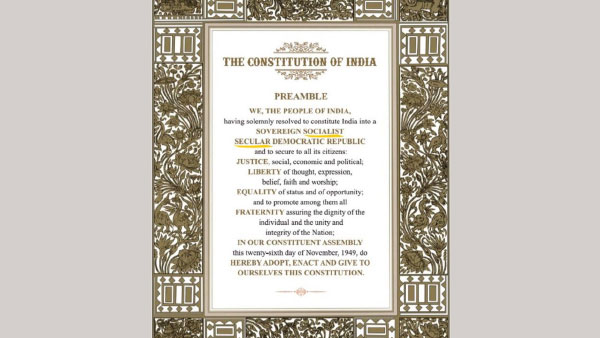
The words ‘socialist’ and ‘secular’ were added to the Constitution in 1976, through the 42nd Amendment. The amendment also replaced the words "unity of the Nation" with "unity and integrity of the Nation". The 42nd amendment came during the Emergency imposed under Indira Gandhi.
Q11. ____ is a 2019 movie starring X and directed by Y, and its title refers to an element of the Constitution.
X plays a police officer investigating the disappearance of three girls. While trying to do his job, X witnesses caste discrimination in various forms, and discovers that there may be more to the crime than is readily apparent. Name the movie, and identify X and Y.
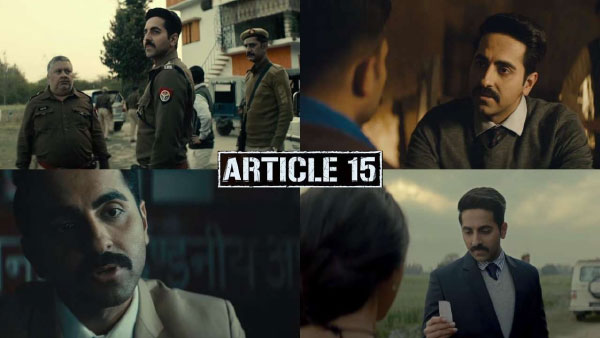
Article 15, released in 2019, stars Ayushmann Khurana as a police officer investigating caste-based violence. The film, which takes inspiration from several real life caste-based crimes, is named after Article 15 of the Constitution of India, which prohibits discrimination on grounds of religion, race, caste, sex or birthplace.
Q12. In the USA, a person can become President for a maximum of two terms. In India, how many times can a person be elected President?
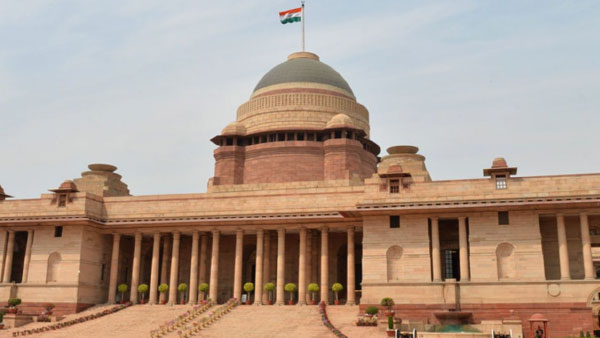
India places no such limit on presidency. A person can hold the office of President as many times as they are elected.
Q13. Which country has the world's longest written constitution?
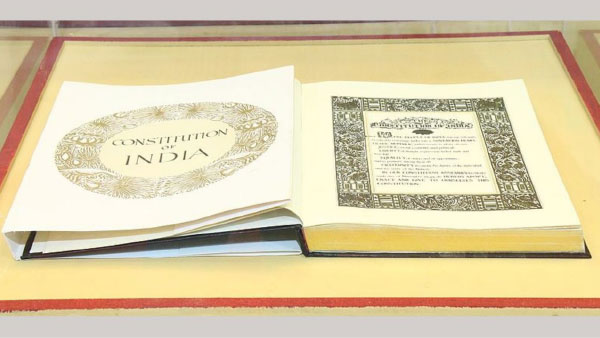
India has the longest written constitution of any sovereign nation in the world.
Q14. When did women get the right to vote in India?
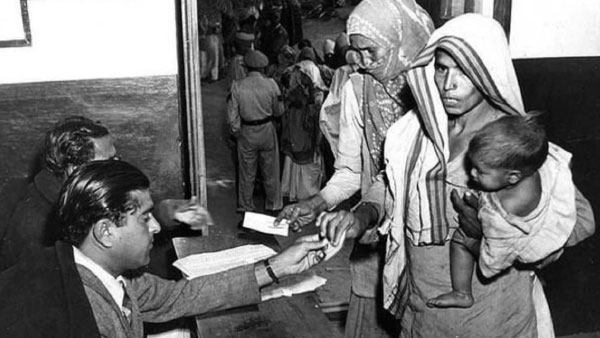
While the British afforded some women the right to vote subject to conditions like property ownership, all Indian women only got the right to vote in elections after the implementation of the Constitution in 1950. The general elections in 1951-52 were the first time that all Indian women could exercise their universal adult franchise and vote.
Q15. If there are any challenges or issues with the Constitution, which body can a citizen approach? In simple terms, who is the final authority on the interpretation of the Constitution of India?
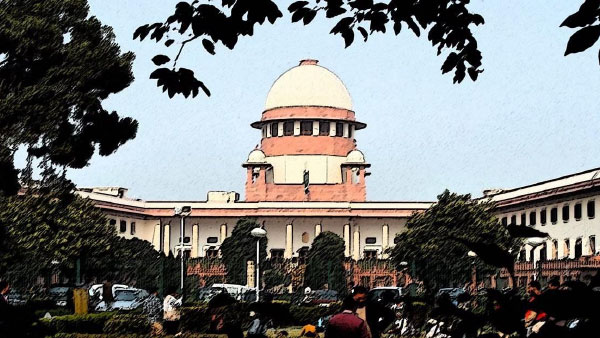
The executive, the legislative, and the judiciary are the three pillars of the Constitution, but the final authority on the interpretation of the Indian Constitution is the judiciary. The courts are the final authority on anything that is ultra vires to the Constitution, that is, anything that violates or goes beyond the scope of the Indian Constitution.
Q16. How many articles did the Constitution of India have when it came into effect in 1950?
The Constitution of India had 395 articles when it was signed in 1950. The final Article at the time was Article 395, which covered repeals. It repealed the Indian Independence Act, 1947, and the Government of India Act, 1935, both which were effectively predecessors to the Constitution of India.
By the end of 2022, the Constitution had been amended as many as 105 times, bringing the total number of Articles to 470.
Q17. ____ was an Indian revolutionary and radical activist, who is said to have been the first to make the demand for a Constituent Assembly, in 1934. A year later, the Indian National Congress made this an official demand of the party.
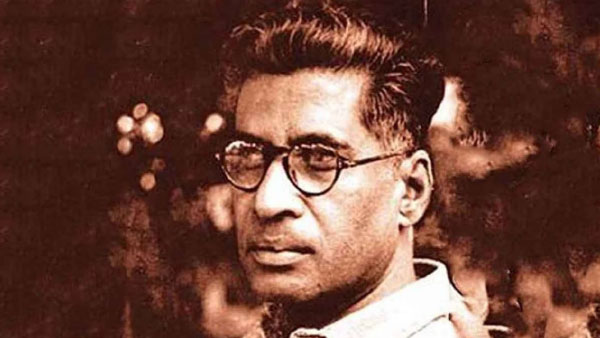
Manabendra Nath Roy was a radical political leader who called for an armed struggle against the British in India. On 21 July 1931, he was arrested for "conspiring to deprive the King Emperor of his sovereignty in India."
Q18. The 105th Constitutional Amendment Act is the latest amendment to the Constitution. It restored the power of state governments to do what?
Deemed to be in force from 15th August, 2021, the 105th Amendment to the Constitution has empowered the state governments to recognise socially and educationally backward classes.
Q19. When was the Constitution of India signed?
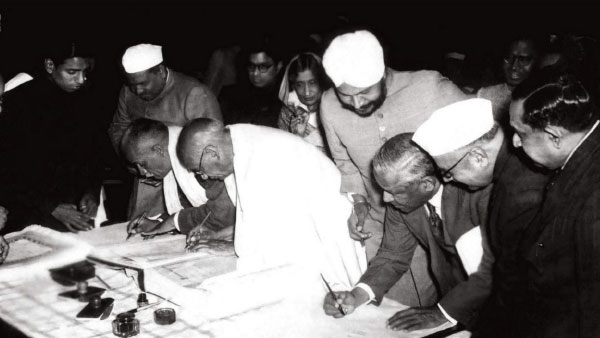
The drafting of the document took the Constituent Assembly 2 years, 11 months, and 18 days to complete. 284 members of the Constituent Assembly signed the Indian Constitution at the Constitution Hall of Parliament in New Delhi on January 24, 1950. It came into effect two days later, on 26 January 1950.
Q20. Article 1 of the Constitution begins with the line: ___________, shall be a Union of States. This is the only provision in the Constitution on what the country can be called for official and unofficial purposes.
In the ‘namakaran’ or naming ceremony for the newborn nation on September 18, 1949, the Constituent Assembly deliberated upon several suggestions made for the country’s name: Bharat, Hindustan, Hind, Bharatbhumi, Bharatvarsh. Ultimately, it resolved as follows: “Article 1. Name and territory of the Union. 1.1. India, that is Bharat, shall be a Union of States.”
YOUR SCORE
Hard luck! Click here to read up more about the Indian Constitution, by visiting the entire collection of The Quint’s ‘Know Your Constitution’ series.
Projects such as this one take a lot of time, effort and resources. Which is why we need your support to keep our independent journalism going. Click here to consider becoming a member of The Quint, and for more such initiatives, do stay tuned to The Quint's Special Projects.
Not bad! Click here to brush up your knowledge of the Indian Constitution, by visiting the entire collection of The Quint’s ‘Know Your Constitution’ series.
Projects such as this one take a lot of time, effort and resources. Which is why we need your support to keep our independent journalism going. Click here to consider becoming a member of The Quint, and for more such initiatives, do stay tuned to The Quint's Special Projects.
Impressive! You seem to know quite a lot about the Indian Constitution. If you want to read more interesting stories on the topic though, head over to the entire collection of The Quint’s ‘Know Your Constitution’ series by clicking here.
Projects such as this one take a lot of time, effort and resources. Which is why we need your support to keep our independent journalism going. Click here to consider becoming a member of The Quint, and for more such initiatives, do stay tuned to The Quint's Special Projects.
Wow, you were so close to a perfect score! You clearly know a lot about the Indian Constitution. But, there are always more interesting things to find out about it, right? That’s why we recommend that you head over to the entire collection of The Quint’s ‘Know Your Constitution’ series by clicking here.
Projects such as this one take a lot of time, effort and resources. Which is why we need your support to keep our independent journalism going. Click here to consider becoming a member of The Quint, and for more such initiatives, do stay tuned to The Quint's Special Projects.
The perfect score! Congratulations, your knowledge about the Constitution is enviable! But, there are always more interesting things to find out about it, right? That’s why we recommend that you head over to the entire collection of The Quint’s ‘Know Your Constitution’ series by clicking here.
Projects such as this one take a lot of time, effort and resources. Which is why we need your support to keep our independent journalism going. Click here to consider becoming a member of The Quint, and for more such initiatives, do stay tuned to The Quint's Special Projects.


